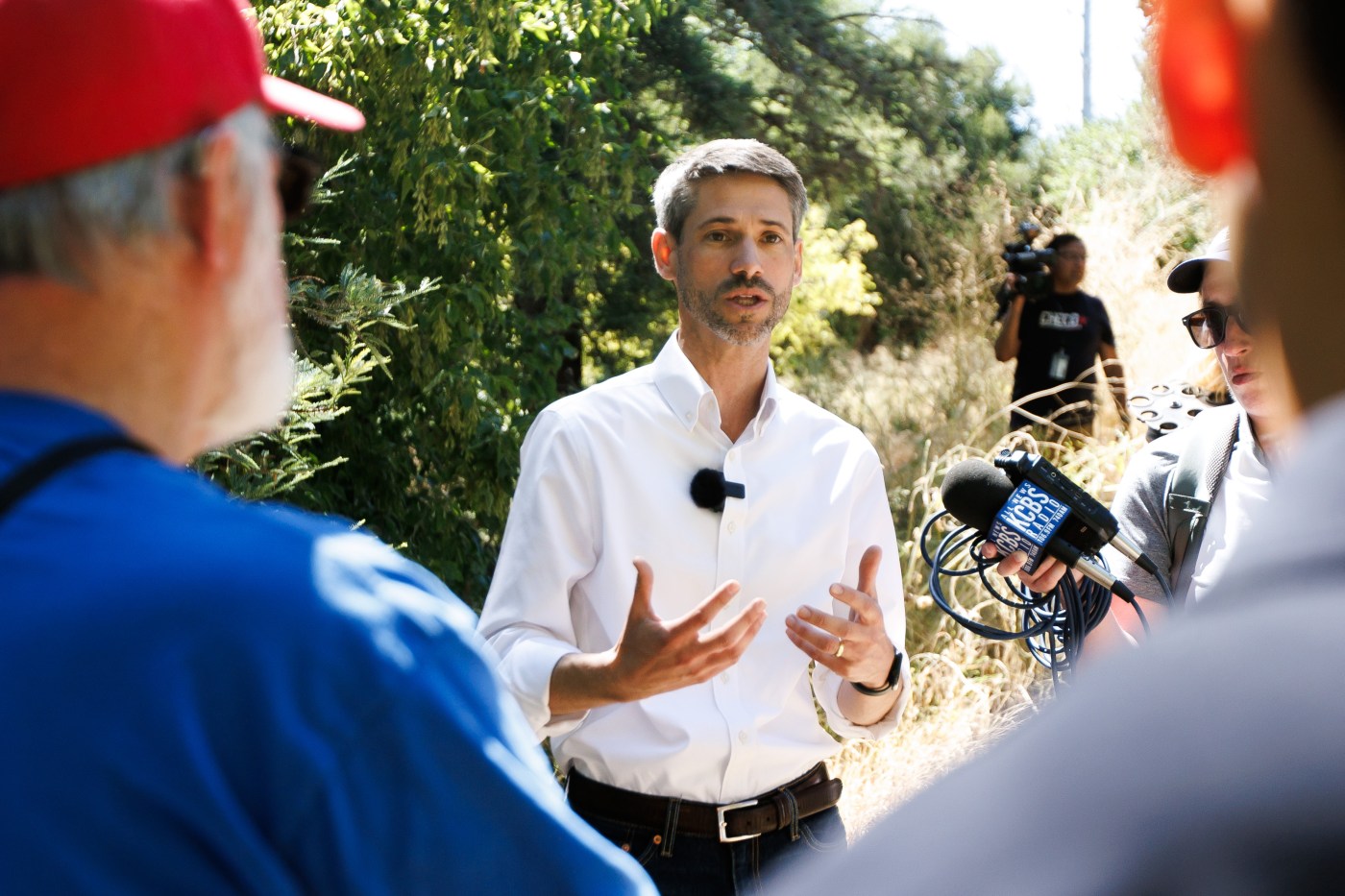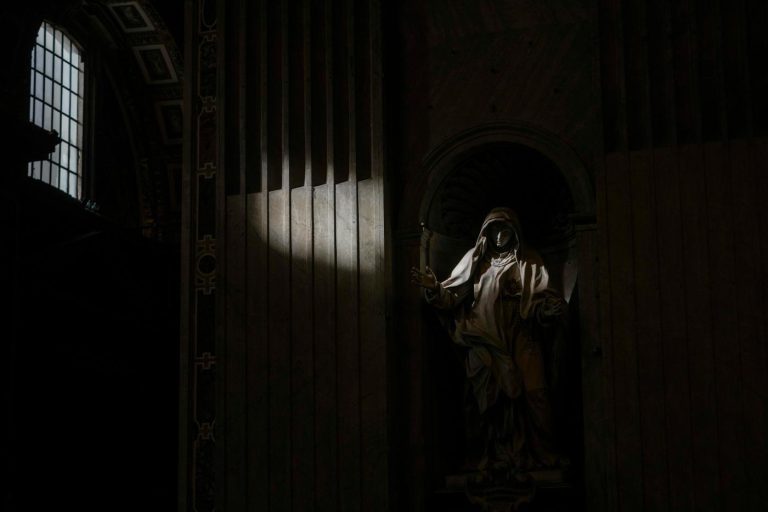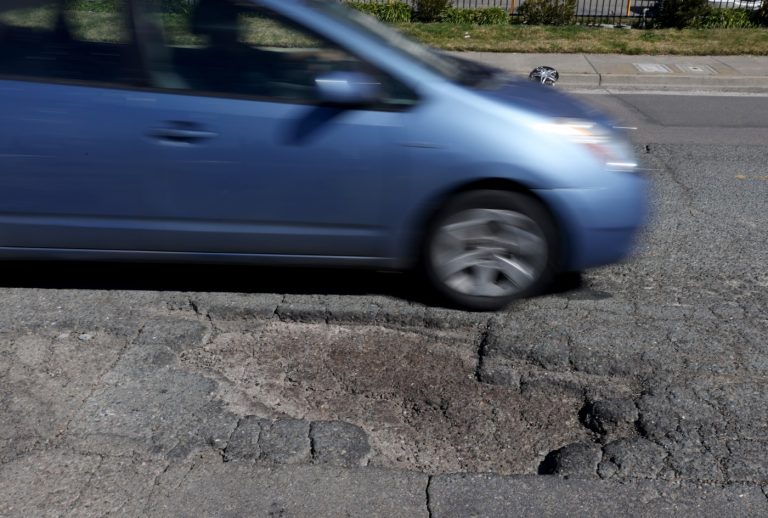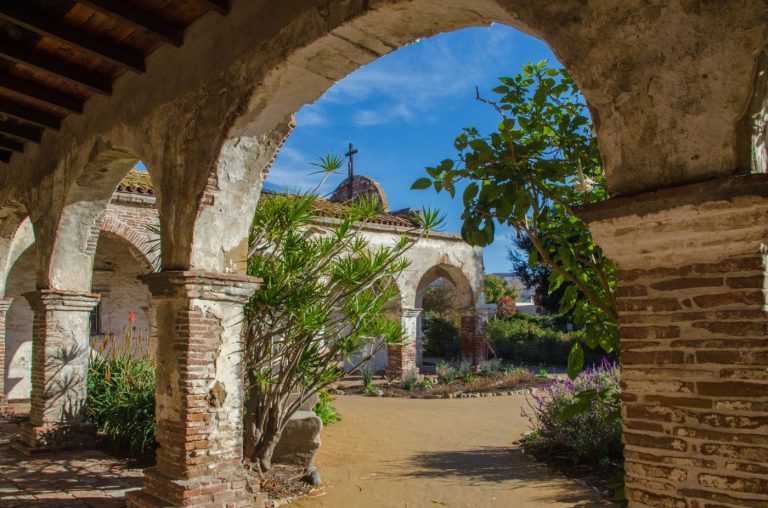The success of another major California city’s safe sleeping program could provide a blueprint for how San Jose approaches its sanctioned encampment sites.
San Jose Mayor Matt Mahan said he was encouraged by the impact the low-cost interim housing alternative had on improving San Diego’s homelessness crisis when he toured the city’s largest safe sleeping site at Balboa Park last week in search of solutions on what does and does not work.
“It’s quite incredible when you look at the scale and coordination of services,” Mahan said. “They have gotten people into management safe sleeping sites with a reduction in issues. Yes, it’s a transitional site, but it’s also a significant improvement on the conditions.”
The homelessness crisis has forced San Jose to reevaluate some of its priorities as it also grapples with a dearth of affordable housing. Recent surveys counted approximately 6,340 homeless residents in San Jose, of whom about 70% were unsheltered.
In this year’s budget, the city has continued to divert millions of Measure E funds from affordable to interim housing solutions, including the abatement of unsanctioned homeless encampments. The city has also made a $27 million historic investment in addressing its storm water permits to comply with the Clean Water Act, which required relocating the residents living along and polluting the city’s waterways to avoid tens of thousands of dollars in daily fines.
San Jose previously focused more on constructing tiny homes or quick-build communities, adding hundreds of units over the past four years — a model that has demonstrated success in helping homeless residents find permanent housing.
However, with the need to abate encampments and a lack of interim housing availability, the City Council experimented with safe sleeping sites and added more alternatives, approving eight prospective sites in June to accommodate 500 homeless residents.
“The fundamental principle is about stabilizing people in safe and supportive sites,” Mahan said. “I’d rather spend the money on that than abatements and cleanups.”
Like other major California cities, San Diego has turned to safe sleeping sites as a lower-cost interim solution, setting up 533 tents total, including 400 near Balboa Park.
Those sites, which cost about $56 daily per tent, offer a combination of necessities like meals, showers and restrooms, individualized case management, medical care and treatment services to help homeless residents get back on their feet.
Portions of the safe sleeping sites are also tiered or terraced for homeless residents facing some of the same challenges or conditions, such as diabetes.
Mahan was also impressed that a few homeless residents also found work as staff members at the San Diego sites.
“Our safe sleeping sites have proven to be a successful and innovative option for getting people experiencing homelessness off the streets and connected to care,” San Diego Mayor Todd Gloria said in a statement. “It was an honor to show Mayor Mahan how these low-barrier sites are working in San Diego and I hope they continue to serve as a model for effective solutions to help vulnerable residents find stability and a path to permanent housing.”
Before the City Council approved this year’s budget, using Measure E funds on interim housing solutions rather than affordable housing projects was contentious, with opponents questioning whether it provided a long-term solution.
The Bay Area Housing Finance Authority removed its $20 billion affordable housing bond at the 11th hour from the November ballot, dealing prospective projects a bigger blow, as the timing left local authorities without enough time to propose alternatives.
But Mahan has dug his heals into the ground, stating that Measure E funding was going where it was most appropriate.
While Mahan supported the housing bond, he said the city also could address the affordability crisis by bending the construction cost curve, which has exploded in the last few years as labor and material costs skyrocketed. A city report last year found that the cost to build a single unit of affordable housing had risen 24% to about $938,700.
Related Articles
How Bay Area cities are responding to Newsom’s calls for homeless sweeps after landmark Supreme Court ruling
Letters: Mental health | Developmental centers | Ireland trip | Christian support | GOP priorities | Distinct policies
Walters: Newsom tries shifting homelessness blame to local officials
These Bay Area cities are getting $43 million from the state for homeless housing
Oakland police ID man killed in June 4 shooting
Mahan said the city has focused on other tools at its disposal to spur development, like reducing taxes and fees and making it easier to build Accessory Dwelling Units, or ADUs, which now make up about a quarter of housing production.
He added that the city needed to treat the homelessness issue “like the emergency it is.”
“As we stabilize and support our most vulnerable residents, it will be important to talk about rebalancing,” Mahan said, “but we have to meet the crisis in front of us today and do so with pragmatic solutions.”












